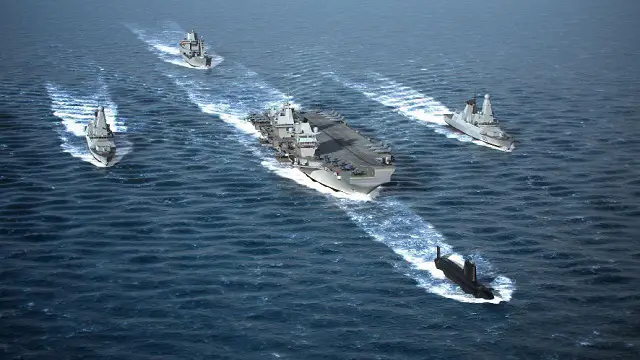

On July 9, the Daily Telegraph reported that UK Merlin helicopters “hunted” a Russian submarine which the newspaper claimed “stalked the Royal Navy’s Carrier Strike Group (CSG)” when the task force passed through the eastern Mediterranean. Despite these warnings, further military exercises aimed against Russia have been launched. Russia warned that if such an incursion was repeated by the UK, then it would bomb any warships involved. The UK’s provocation was sanctioned by the United States as part of a long-planned operation. In June, a Russian patrol ship fired warning shots at the CSG21 British destroyer HMS Defender and a Russian warplane dropped bombs in its path, after Defender entered waters in the Black Sea off the coast of Crimea, which is claimed by Russia.

Alongside CSG21 were the USS Iwo Jima Amphibious Ready Group, and Standing NATO Maritime Group 1 and 2 which include eight to twelve destroyer warships and frigates. Its first move on leaving base at Portsmouth was to participate in the NATO exercise Steadfast Defender, held from May 20 to May 28 off the coast of Portugal. A review of the operations already carried out, in regions of the world that are tinderboxes, shows how reckless the entire venture is.
#Future royal navy carrier battle group series#
It adds, “From defending democratic values and tackling shared threats, to seizing new trade opportunities through engagements with Singapore, the Republic of Korea, Japan, India and others, the deployment marks a step-change in UK engagement in the region.”ĬSG21 has been portrayed as carrying out a series of exercises to ensure that the Elizabeth, one of the UK’s two new aircraft carriers, is “battle ready”. It demonstrates both the UK’s support for the freedom of passage through vital trading routes and for a free, open and inclusive order in the Indo-Pacific.” The statement, published on the UK government website, declared, “The deployment represents the UK’s commitment to deepening diplomatic, economic and security ties with India and in the Indo-Pacific region. The mission represents a deepening of military relations between Britain and India, with a British High Commission, New Delhi statement explaining, “An Indian warship will also exercise with the Royal Navy off the coast of the UK in August.” The exercises involved 10 ships, two submarines, approximately 20 aircraft and almost 4,000 personnel. Last Wednesday, CSG21 began three days of operations after meeting up with the Indian Navy in the Bay of Bengal. Following this, a series of exercises with be held in the Philippines Sea with the US, Australia, France, Japan, New Zealand and South Korea. The Carrier Strike Group is carrying out over 70 engagements and exercises with 40 nations across the Mediterranean, Indian Ocean and Indo-Pacific and, in the next days, a provocative operation against China in the South China Sea. Alongside Elizabeth are six Royal Navy ships, a Royal Navy submarine, US Navy destroyer The Sullivans, and a frigate from the Netherlands.

The Carrier Strike Group, with its main warship the HMS Queen Elizabeth aircraft carrier, was launched in May, beginning a 28-week deployment spanning over 26,000 nautical miles. NATO’s UK-led Carrier Strike Group (CSG21) has completed military exercises in the Indian Ocean, after transiting the Suez Canal earlier this month.


 0 kommentar(er)
0 kommentar(er)
